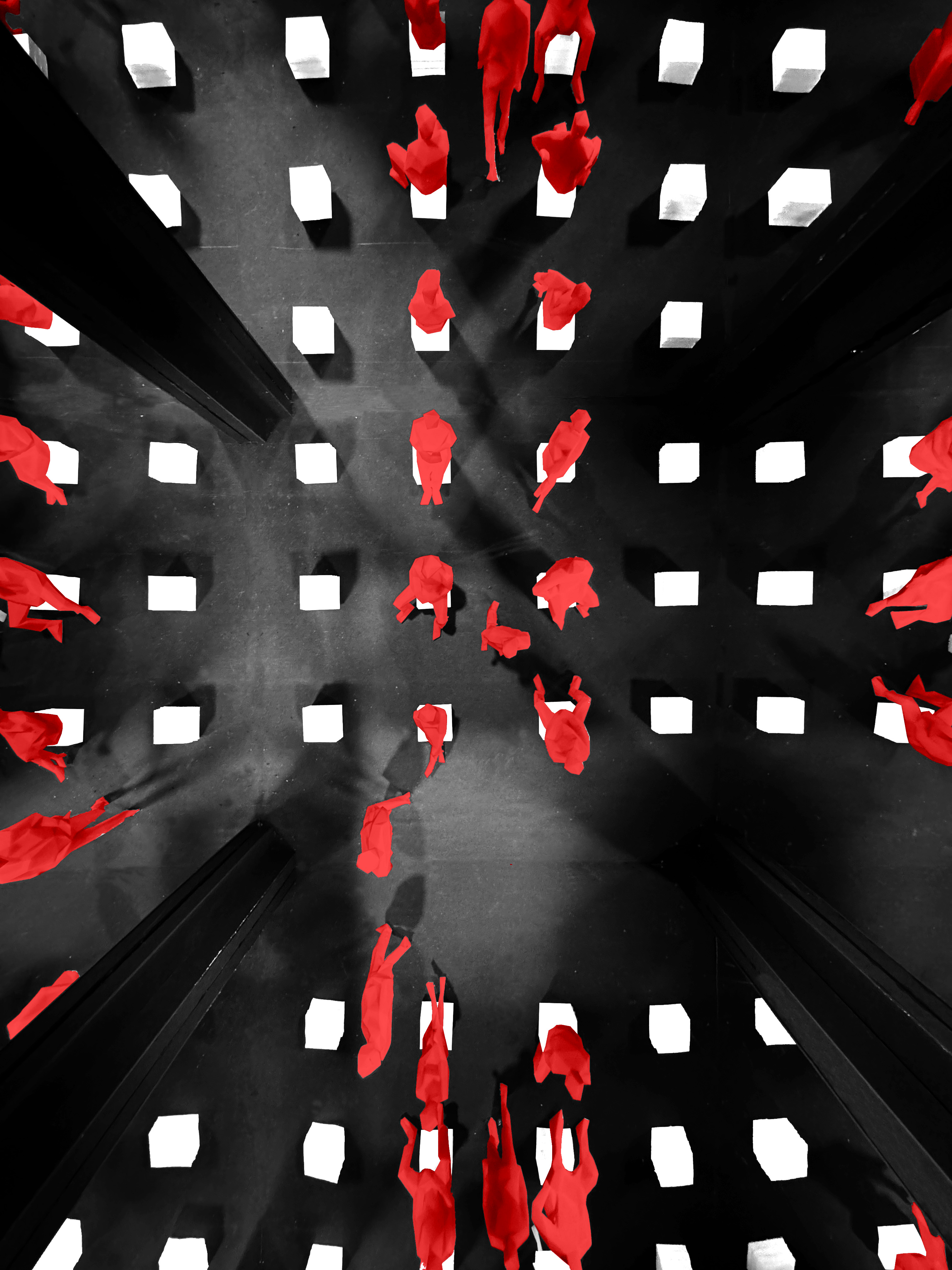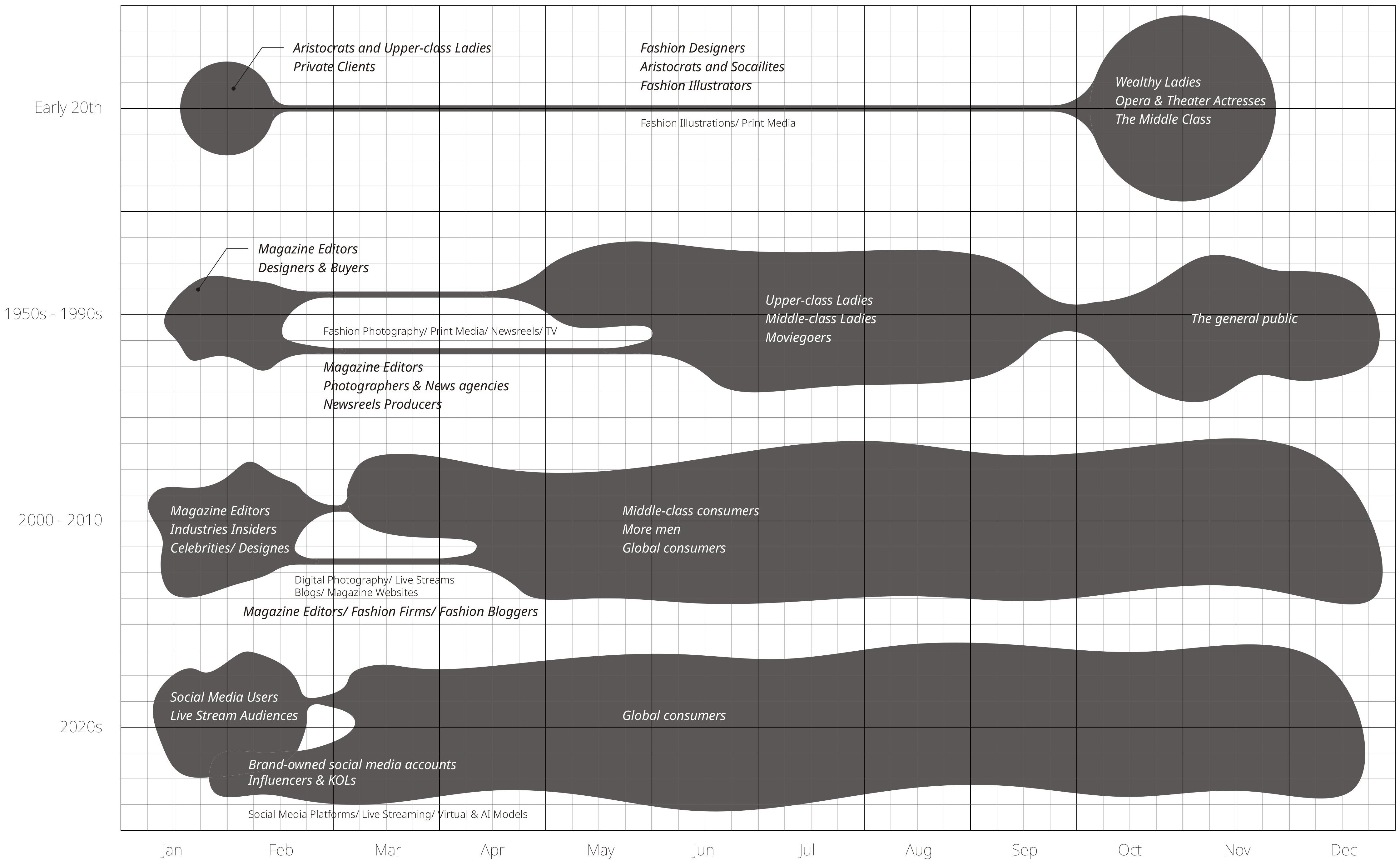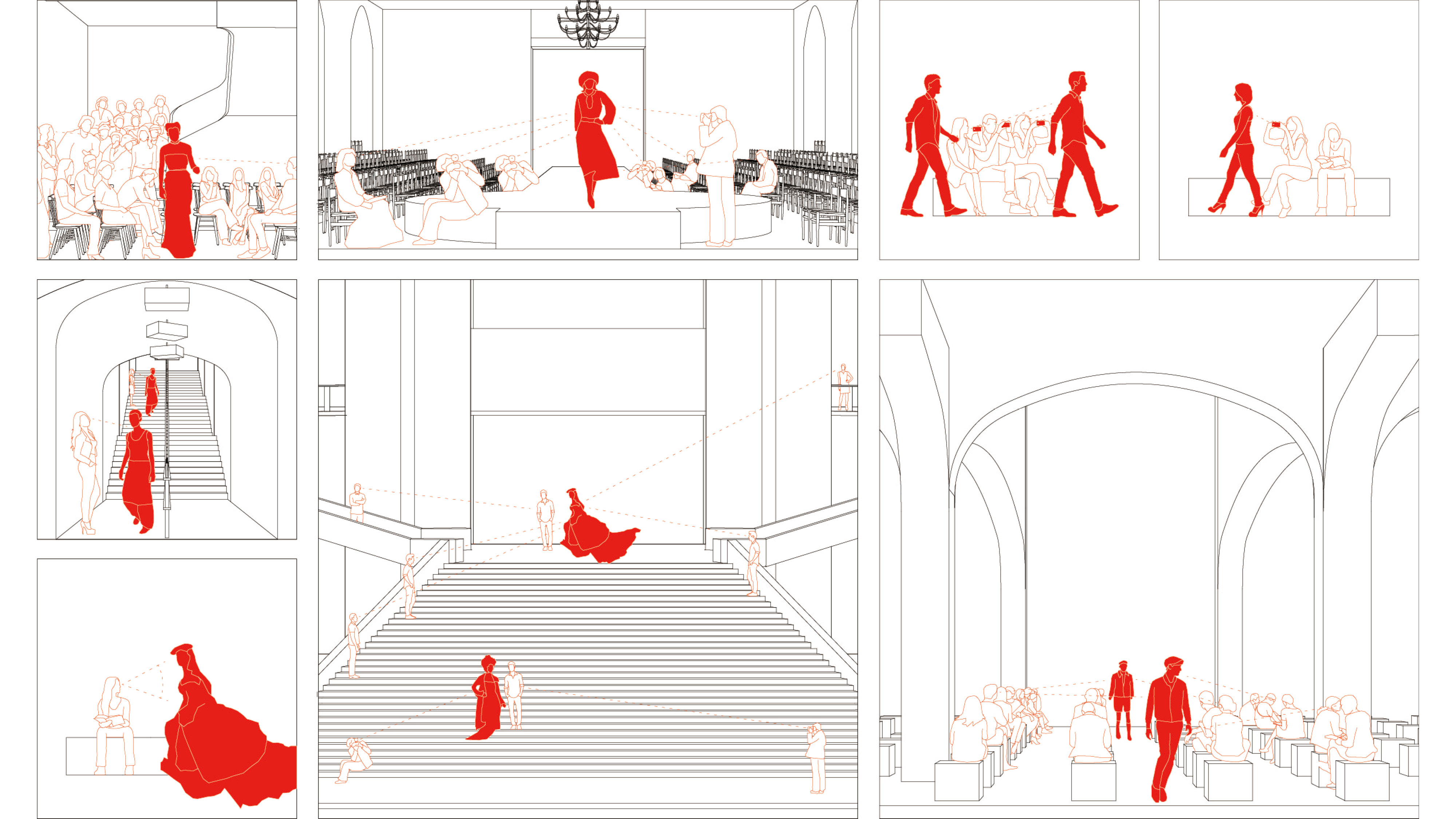Monica Hsieh

Public Intimacy: Runway
Performative Spatial Study
From Archival Images to Spatial Analysis
Beginning with archival images and spatial studies, this research explores how runway shows evolved as performative spaces shaped by shifting relationships between models and audiences. The process concludes with a peep show model that reinterprets the act of viewing, inviting reflection on how these dynamics can inspire future approaches to retail design. The insights gained from this study form the conceptual groundwork for my thesis, which examines how performance and fashion can merge within spatial design practice.
-
2025
-
Seminar & Independent Study (Syracuse University)
-
Performative Spatial Study
-
Syracuse, NY
-
Michael Speaks, Erin Cuevas
Tracing the Evolution of Runway Space
This study began with an observation of archival photographs and historical footage of runway shows. By mapping these materials chronologically, a significant turning point emerged around 1971, when scenography and exhibition design began to influence fashion presentation. From that moment, runway shows evolved beyond showcasing garments to constructing immersive spatial narratives.

Evolving Interactions: From Intimacy to Influence
The diagrams trace how runway spaces evolved from intimate salon rooms to expansive public venues. Early shows were exclusive and close to the audience, later shifting to linear catwalks and brand-specific settings. With technological progress, temporary industrial and outdoor stages emerged, reflecting fashion’s move toward inclusivity and public presence.

From Private Salon to Global Screen
The evolution of media and technology has expanded the reach of runway shows beyond their original private audiences. Early presentations were limited to invited guests and later shared through print media. As photography and fashion magazines emerged, exposure accelerated and reached broader social circles. The rise of digital platforms introduced bloggers and online viewers, eventually leading to today’s celebrity- and influencer-driven audiences, where live streaming allows global participation in real time.

Audience and Performer Interaction
The final diagrams zoom in on how performers and audiences interact. Early salons placed viewers close to the garments, encouraging direct observation and tactile engagement. With the emergence of linear catwalks and photographers, distance increased and focus shifted from clothing details to atmosphere and brand identity. Today, audiences often experience the show through screens, extending participation beyond the physical space.

Toward the Thesis Project
This study serves as the foundation for my thesis project, which explores how media and social dynamics shape the pace and perception of fashion. By integrating runway and retail store design, the project examines how rapid visual communication influences the way people experience and consume fashion today.